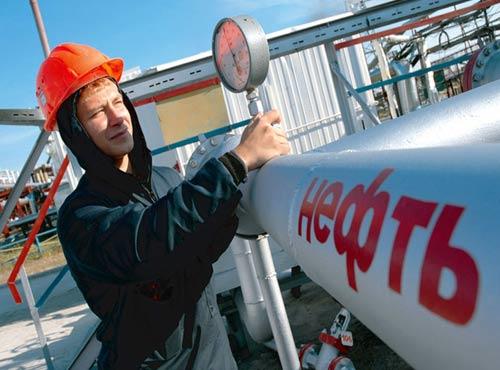
RUSSIA: THE TOP

China's crude oil purchases from Russia jumped 52.4% year on year to a record high in April, propelling it to the top spot for the second time in 2016 and displacing Saudi Arabia, but May purchases from the European supplier could slow because of higher flat prices, traders said.
Russia shipped 4.81 million mt, or 1.17 million b/d, of crude to China in April, about 36,910 b/d higher than the last peak of 1.14 million b/d recorded in December last year, according to data released by the General Administration of Customs Tuesday.
It was the sixth time Russia has moved to the top spot as China's crude supplier, since capturing that spot for the first time in May, 2015.
On the other hand, volumes to China from Saudi Arabia was 1 million b/d in April, dropping 21.8% year on year, despite an increase of 3.5% from March.
Russia in April sent nearly 2 million mt of crude via pipeline to the northeastern city of Daqing in China, up 8.2% from 1.84 million mt in the same month last year, according to the Central Dispatching Unit, the statistical arm of Russia's energy ministry. The volume would translate into 488,000 b/d, taking a conversion factor of 7.33 barrels per metric ton.
Most of those barrels go to PetroChina's refineries. The remaining 686,600 b/d from Russia were seaborne arrivals, which flowed to Sinopec, CNOOC as well as independent refineries. Most of the cargoes were loaded from the Far East port of Kozmino.
MAY VOLUMES LIKELY TO SLOW
According to a Platts' survey, Chinese independent refineries in Shandong took around 222,970 b/d, or 943,000 mt, of Russian crude in April, including ESPO, Ural and Sokol.
But inflows from Russia are likely to retreat in May, compared with April, as less seaborne arrivals are expected this month, while pipeline supply based on term contracts are expected to remain largely unchanged.
Total seaborne volumes -- cargoes that have been either discharged or are lining up for discharge at Chinese ports -- are around 560,000 b/d, or 2.37 million mt, so far this month, latest data from Platts' China Oil Analytics showed. It was around 18% lower than the seaborne cargoes that were discharged in April.
Meanwhile, about 861,400 mt of Russian seaborne cargoes have discharged in Shandong since May 1, Platts market data showed.
"There is weaker demand overall from China for ESPO due to higher flat prices, compared with the first quarter. And China's inventories are full. Margins are not looking great either," said a crude trader.
Looking forward, Russia's exports of the medium, sweet ESPO crude blend are expected to decline around 18% in June from May, market sources added. This trend would also limit the volume of June arrivals from Russia to China.
SAUDI ARABIAN BARRELS
Meanwhile, Saudi Arabia is stepping up efforts to save its spot as the top supplier to China. Saudi Aramco has started to sell barrels to China's independent refineries to protect its market share from getting eroded further, as Russia expands its hold on the independents.
Also, the pressure on Saudi Arabia to sell additional barrels is increasing as incremental supplies are expected from its new oil fields starting operations this year.
Over the first four months of this year, Saudi Arabia's market share was down nearly two percentage points to 14.4%, while Russia's share rose three percentage points to 13.7%.
Saudi Aramco's sales to Chambroad was the first to an independent Chinese refiner by the Saudi company. The vessel carrying 730,000 barrels, or around 100,000 mt, of Saudi Arabian crude arrived at the port of Longkou in eastern China's Shandong province last Friday.
Aramco until recently has been cautious about selling crude to the independent refiners as it was not familiar with their credit profiles.
Traders have said recently that more Saudi Arabian barrels are expected to be sold to independent refineries. But these barrels are unlikely to be booked under Saudi shipments in GAC's data, but under Japan instead, as they would be loaded from Okinawa in Japan, where Aramco has leased storage facilities.
Japan is a workable loading location for Aramco for their shipments to China's independent refiners. The voyage to China from Japan is much shorter than from Saudi Arabia. In addition, it is easier to find an alternative buyer in the region for a smaller cargo than a typical VLCC, in the event a deal falls apart.
OVERALL IMPORTS SHADE BELOW RECORD HIGHS
China's total crude imports stood at 7.96 million b/d in April, up 7.6% year on year and 3.5% from March. This is the second highest monthly import rate on record, just below the record high of 8.04 million b/d reached in February this year.
"Looking ahead, we think crude imports in May could be impacted by logistic bottlenecks and refinery shutdowns," Barclays said in a research note.
"According to Dongming, the largest teapot refinery in China, ports are congested due to lack of pipeline capacities and inventories in China's teapot refineries are high. This could lower import demand from teapot refineries, a large driver in higher crude imports since licenses were acquired last year," it added.
-----
Earlier:
CHINESE-RUSSIAN TARGET: $100 BLN





